The Unendowed and Rich History of County Down
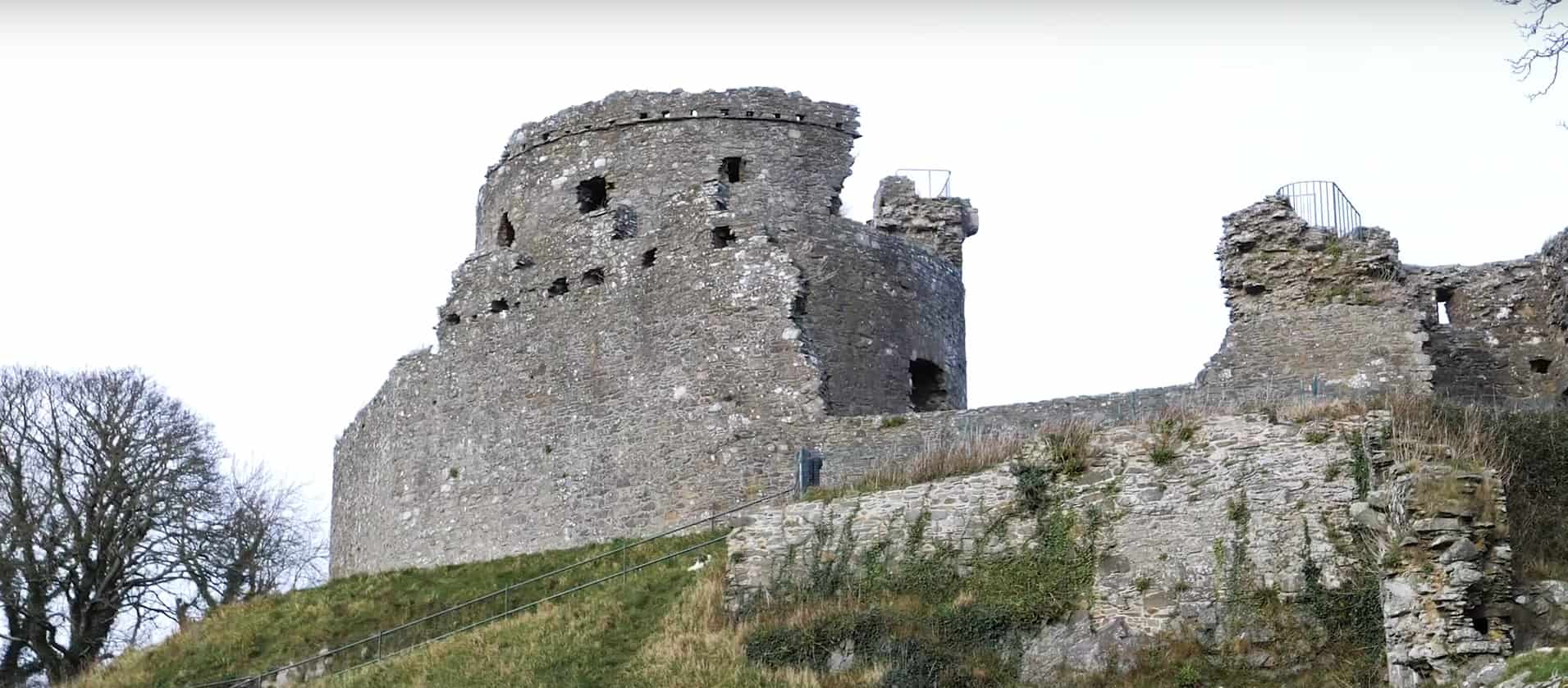
Updated On: April 13, 2024 by ConnollyCove
Northern Ireland is considered one of the most alluring countries in the Northern Hemisphere. With its various scenic attractions, no part combines as much as the heart of County Down. Consider the glorious walks in the Mourne Mountains, rolling farmland with cosy village pubs, and birdwatching on the mudflats of Strangford Lough; you’ll want to take an eventful tour around the whole county of Down to explore it all.
County Down takes its name from the town of Downpatrick (from the Irish, Dún Pádraig, sometimes translated as “Patrick’s Stronghold”). The county’s ties to Saint Patrick begin in the township of Saul. Where it is believed that St.Patrick conducted his first mass in Ireland, they end in his death; his granite tomb, carved out of the Mourne Mountains, underpins the cathedral at Downpatrick, where he is supposedly interned, alongside fellow patron saints Brigit and Columba.
The Heart of Down
Down is Ireland’s most easterly county, bordered by Armagh and Antrim. Both are also two counties located in Northern Ireland.
The city of Belfast is located at the peripheries in the north of the county. Meanwhile, the shoreline of Lough Neagh, shared disproportionately with four other counties, borders the northwest.
County Down is the most industrialised region in Northern Ireland, encompassing urban and parts of greater Belfast. Affectionately known as ‘The Linen Homelands’, it is still the centre for Irish Linen.
The Ferguson Linen Centre is in Banbridge, and the award-winning Irish Linen Centre and Museum is in Lisburn. Following the history of the flax flower fabric from the 17th century to the present day. Furthermore, Down has many museums and records of times past across the county, including the perfectly preserved Down County Museum at Downpatrick’s Old Jail.
The Ards Peninsula, with its rolling drumlins and protected coves, forms a shelter for the waters of Strangford Lough.
History
County Down was not a plantation county, but it had long been infiltrated partly by English and primarily by Scottish settlers whose influence was decisive in the north of the county. Before and for some time after the coming of the English, Down was known as Ulladh or Ulidia, the original name of Ulster. The ancient inhabitants are supposed to have been the Voluntii of Ptolemy.
The northeastern area of Down was, at an early period, occupied by the Picts. These were a considerable colony as late as the 6th and 7th centuries. It was extending from Strangford Loch to the Lower Bann in Antrim. Whether these Picts, called Cruithne by the annalists, were of a nation essentially different from the bulk of the Celtic inhabitants of Ireland is still under discussion and a channel of controversy.
Further History Surrounding County Down
Down was overrun by the English again under John de Courcy in 1177. The chief families introduced by the conquest were the Savages, Whites, Riddles, Sendalls, Chamberlains, Stokes, Mandeville, Jordans, Staunton, Logans, Russels, Audleys, and Martells. Of these, the Savages, Whites, and Russels remain in Ireland. However, most of the other names have become extinct due to subsequent conquests by the Irish and forfeiture.
The Whites and Savages, being separated from the English, fell soon after into Irish habits. But they still maintained independence from the hostile tribes around them. Ardquin in Upper Ards and Killileagh on the shore of Loch Strangford were their respective places of defence. The attainder of Shane O’Neill, who was slain in rebellion in 1567, threw all Iveagh, Kinelearty, Castlereagh, and Lower Ards into the hands of the Crown.
Downpatrick
The all-graceful County City of Down, Downpatrick, indeed illustrates the north’s history in architecture; Irish Street, English Street, and Scotch Street meet at the town centre. The vast Georgian Mail leads past Down County Museum (and St. Patrick Heritage Centre) up to Down Cathedral. St Patrick’s grave is marked by a great block of Mourne granite in the cathedral graveyard.
Bangor
Another great place to check out in County Down is the lovely seaside resort known as Bangor. Bangor is home to one of Ireland’s most prominent and award-winning marinas. The seaside resort has some brilliant attractions, including the famous Pickie Family Fun Park and the North Down Museum. The town has plenty of places to stay, from lovely B&Bs and seafront hotels. It is the perfect place to stay and enjoy your time in County Down.

Holywood
Located between Bangor and Belfast is another town in County Down worth exploring, Holywood. Most people might think of ‘Hollywood’ in America, but there is also a place with the same name (but only one letter l) in Northern Ireland. Holywood is the birthplace of famous faces such as golfing legend Rory McIlroy and successful actor Jamie Dornan. But there is more to Holywood than just creating famous people; it is also home to the Ulster Folk and Transport Museum.
At the Ulster Folk and Transport Museum, you’ll be transported back to over 100 years ago, where you’ll experience how life was back then. It is one of the most popular attractions in Northern Ireland.
County Down’s Nature
Struell Wells
Struell Wells was built around a stream flowing through a secluded valley. It was a popular place of pilgrimage from the 1600s until the 1840s. The waters were believed to have curative powers, and the site had a ruined church, 2 bath-houses (one for men, one for women) and two roofed wells, all fed by the stream. It is a popular destination for any individual seeking serenity and peacefulness in the vast arrays of nature.
Inch Abbey
Located on the north bank of the Quoile River, Inch Abbey was founded by John de Courcy in atonement for his destruction of Erenagah Abbey. The buildings are mainly from the 12th and 13th centuries. It is believed the church is older than that at Grey Abbey, which was built about 1193. It’s a place worth capturing, and the weather is always warm.
Ward Park
With beautiful lakes & walks, a bird sanctuary & facilities for various sports, plus other attractions. Ward Park covers an area of 37 acres, and among its attractions are a children’s playground, all-weather hockey pitches, cricket pitches, bowling greens, putting green and tennis courts.
It also has a chain of small lakes providing a wildfowl sanctuary with many exciting specimens and dry pens containing many exotic birds.
Mourne Mountains
One of the most notable features in County Down is the stunning Mourne Mountains. They are the highest mountains found in Northern Ireland. They have also been considered an area of Outstanding Natural Beauty and suggested as the first national park in Northern Ireland.
It is one of the most popular attractions in the county, and many tourists and locals visit it on any suitable day. One of the main features of the Mourne Mountains is the Mourne Wall. It is a 22-mile dry stone wall that crosses over 15 summits to help define the boundaries of the area purchased by the Belfast Water Commissioners in the 19th century.
Once you reach the summit of the mountain, you can admire the experience. You might not know the hills that inspired the work of C.S Lewis ‘Narnia, and you’ll understand why when you take a trip to the Mourne Mountains.
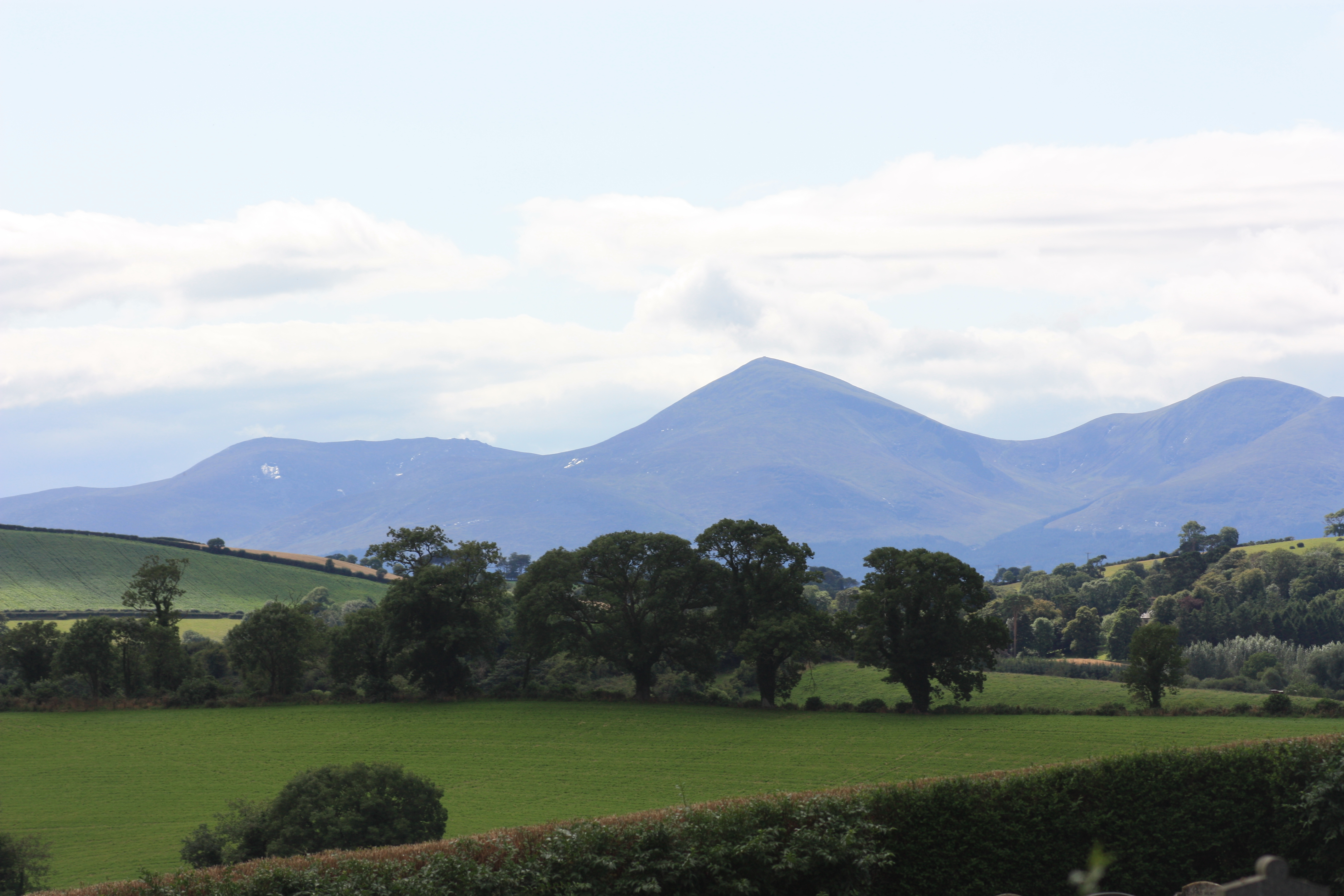
Tollymore Forest Park
Take a trip to the first state forest park in Northern Ireland, the gorgeous Tollymore Forest Park. It is located at the foot of the Mourne Mountains, near the seaside town of Newcastle in County Down. The forest covers over 650 hectares, including impressive panoramic mountains and sea views.
At Tollymore Forest part, you can participate in various outdoor activities, including walking, camping, orienteering, horse-riding and more sporting activities. The walking trails are all colour-coded, so you know the difficulty level. The four main trails are the Arboretum Path, River Trail, Mountain Trail and the Drinns Trail.
The forest park offers the perfect opportunity to get out and experience County Down’s beautiful natural and peaceful surroundings. The park has also been used in the popular television series Game of Thrones, which might interest fans of the show in this attraction.
Castlewellan Forest Park
The beautiful Castlewellan Forest Park is another excellent place to explore in County Down. The forest park offers one of the most impressive tree collections in Europe, a historic castle, and a peace maze. You are surrounded by beauty at Castlewellan Forest Park, with its unique 18th-century landscape and features. And I am not forgetting the fantastic panoramic views.
The Peace Maze is also a fun attraction created in 2000 and 2001 to symbolise hope and peace in Northern Ireland. Public members helped make the maze by planting 6000 yew trees. For a long time, it held the Guinness world record for being the world’s most giant permanent hedge maze. Until the Pineapple Garden Maze in Hawaii was created.
It is a growing tourist attraction in Northern Ireland, and many tourists visit the impressive maze.

Most Popular Places
Exploris Aquarium
Located in Portaferry on the shores of Strangford Lough, visiting Exploris Aquarium will let anyone enjoy a clear, unforgettable diver’s view of marine life worldwide. Exploris underwent some renovations in the past few years. It now offers even more tropical fish, a shark tank and a reptile area. Exploring the dark depths of the reptile-filled rainforest where a snappy crocodile and green gecko hide is also a must. Both young and old will enjoy this attraction.
Mount Stewart
Mount Stewart is one of the most inspiring gardens in the National Trust’s ownership, and this neoclassical house radiates ancestry and elegance.
It was established by Lady Londonderry, who considered it to be ‘the coldest, darkest, dampest’ place in the world. She set about transforming the land around the house whimsically and colourfully. No expense was spared in turning this extensive parcel of land on the Ard’s Peninsula, located narrowly between Strangford Lough on one side and the Irish Sea on the other, into the most talked about garden in the empire at the time.
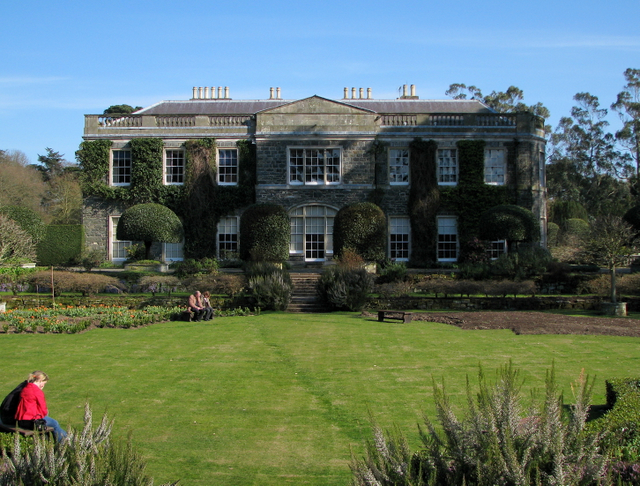
Castle Espie Wildfowl & Wetlands Centre
Castle Espie, Wildfowl and Wetland Centre is situated on the shores of Strangford Lough near Comber. The castle’s tranquil setting offers the best views of Strangford Lough and County Down. It is home to Ireland’s most extensive collection of native and exotic waterbirds.
The best months to visit are May and June, when it’s overrun with goslings, ducklings and cygnets. And October, when vast flocks of the 30,000 light-bellied Brent geese (75% of the world’s population) arrive from Arctic Canada.
Rowallane Gardens
Whatever the season, there’s always something new to see at Rowallane Gardens, one of the most beautiful gardens in Northern Ireland.
Carved from the County Down landscape, the garden has grown from the 19th-century beginnings of the Reverend John Moore and his nephew Hugh Armytage Moore. Their vision helped create a place to leave the outside world behind and immerse yourself in nature’s beauty.
Famous in its own right for the gardens and featured in season one of the TV series Game of Thrones as the “Godswood”. Rowallane regularly hosts a wide range of events for the family. The Halloween events are viral, including the annual Christmas Yuletide Market on the 12th and 13th of December.
Let your imagination run riot among the unusual plants, colours, sculptures and magical features of Rowallane Garden.
St Patrick Visitor Centre
While St. Patrick’s legacy is visible throughout Northern Ireland, the city of Downpatrick, whose name pays homage to the saint, is an excellent place to begin a Patrick-related pilgrimage.
The Saint Patrick Centre is the only permanent exhibition in the World about Ireland’s Patron Saint. For a truly interactive experience, The Saint Patrick’s Centre takes you on a journey using film and video. The exhibition focuses on Patrick’s own words, drawn from a confession made near the end of his life.
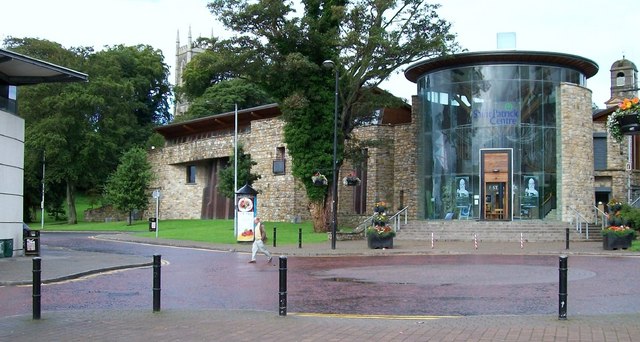
Hillsborough Castle
Hillsborough Castle is one of Northern Ireland’s most beautiful premises. The castle dates back to the 18th century and offers an incredible history. Guests are invited for tours of this elegant Georgian house. Today, it is a working royal palace functioning as the royal family’s official residence. When they are visiting Northern Ireland, it has also been the home of the Secretary of State since the 1970s.
The principal seat of the Marquesses of Downshire for more than 200 years, Hillsborough Castle, was constructed with a warm golden-orange masonry by Wills Hill and built in the 1770s as a simple country home for his family. The expanded and remodelled mansion is still used as the venue for ceremonial and personal royal and state functions. Also, many presidents and princesses have passed through the iconic house for royal engagements and peace discussions.
Furthermore, Hillsborough Castle is overseen by the prestigious Historic Royal Palaces (HRP) organisation. Whose mission is to maintain and preserve the places where history has been made. Its inclusion among the palaces of HRP places it among Britain’s most elite landmarks, alongside the Tower of London, Kensington Palace, Hampton Court Palace, the Banqueting House, and Kew Palace.
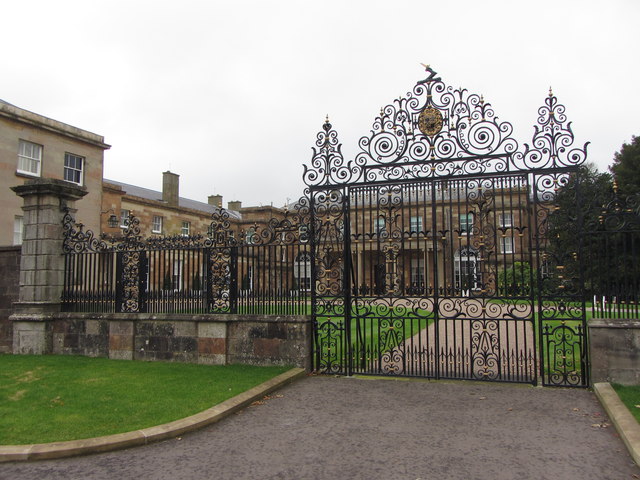
Grey Abbey
With Inch Abbey, Grey Abbey is the best example of Anglo-Norman Cistercian architecture in Ulster. It is the daughter house of Holy Cultram (Cumbria). Founded in 1193 by John de Courcy’s wife, Affreca. Poor and decayed in the late Middle Ages, the abbey was dissolved in 1541. But in the early 17th century, it was granted to Sir Hugh Montgomery. Grey Abbey and many of the surrounding townlands have been in the possession of the Montgomery family ever since.
Hugh Montgomery, together with another entrepreneurial Scotsmen, James Hamilton, successfully planted thousands of Scottish settlers in the Ards and North Down. These hard-headed businessmen made the plantation of North Down and Ards happen, where English armies had failed.
Down County Museum
Down County Museum is situated in Downpatrick and is an excellent museum covering many periods of local history. The rich heritage of County Down is brought to life in fascinating exhibitions, lively events, hands-on activities and award-winning education programmes.
Moreso, the museum’s permanent exhibition, Down Through Time, tells the story of 9000 years of human history in the county, with over 1100 objects and documents in fascinating displays. Lively guided tours, varied temporary exhibitions and a tearoom with a unique view of the River Quoile and the Mound of Down can all be found there.
County Down’s Food
Once you’ve tasted what Belfast offers, head towards the stunning coastline of Strangford Lough in Down. Visit the Echlinville Distillery, which has revived the age-old tradition of distillery floor malting to create Dunville’s whiskey and Jawbox gin.
Meandering south through St Patrick’s country, join the Mourne Coastal Route at the picturesque fishing village of Dundrum. A few restaurants serve fresh seafood from local ports and their shellfish beds.
County Down has retained plenty of “old world” charm over the years, so making time for a stopover there should be gratifying. There are many things to see and explore. Overall, it is quite a pleasant Irish county town for a walk and some snapshots, and there are some decent (ancient and modern) entertainment venues there, too.
Worthy reads about Ireland:
The Beauty of County Limerick| Interesting Facts about the Toast of Ireland| Mesmerising Beauty of County Sligo | Famous Irish Authors who Helped Promote Irish Tourism| Things You Shouldn’t Miss out in County Fermanagh|






